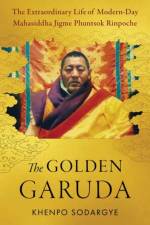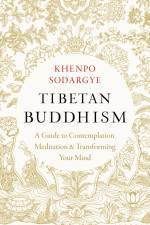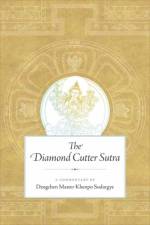- A Commentary by Dzogchen Master Khenpo Sodargye
av Khenpo Sodargye
197
Khenpo Sodargye translates and provides commentary on the Diamond Sutra, the oldest printed book in China, shedding light on the Buddha’s teachings on how to destroy attachment without being led astray; the author is a household name in China and his books and CDs sell in the millions in China.To study the Diamond Sutra is to realize that fluctuations of change, happiness, fear, anger, and sorrow are not the true essence of your life. The dialogue between the Buddha and his disciple, Subhuti, gives a view of the world that deconstructs our normal categories of experience to indicate that we are always relating to figments of our own imagination, that what we think are real entities in the world are conceptualizations. The Buddha teaches us to cut our attachment to all phenomena and realize that there has never been anything such as an “I,” which is empty of inherent existence. Attachment is the root cause of our suffering; even the most minor attachment can still cause unending distress. Yet the Buddha also teaches that it is better to have attachment as gigantic as the mythic Mount Meru to “existence” than attachment as tiny as a mustard seed to “nonexistence.” That is, when we believe we are giving up attachment, and that because all phenomena are empty there is no need to be attached to virtue, we fall into the worst trap of all—the deluded attachment to emptiness. So how do we destroy attachment without being led astray? With this question in mind, Dzogchen Master Khenpo Sodargye provides sparkling commentary on the Diamond Sutra from the view of the Sutrayana—so that the reader will understand its actual meaning (incidentally preparing the reader to understand the view of the Great Perfection and Mahamudra). Before recognizing the nature of the mind, we learn we must hold on to things that are virtuous and right. Like a boat, these can help us cross a river; until we reach the other shore, it makes no sense to give them up. The division of the sutra into thirty-two chapters, according to the Chinese Buddhist tradition, makes it easier for readers to understand the meaning of the Buddha’s teaching stage by stage.



